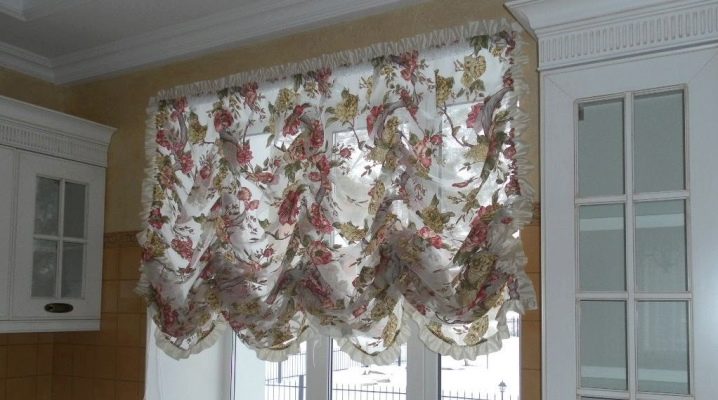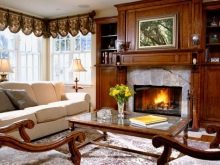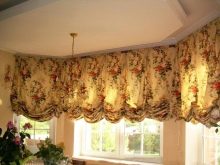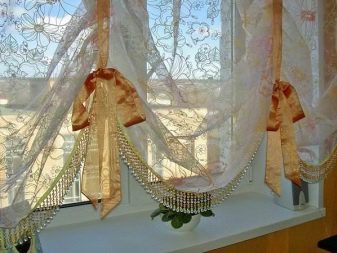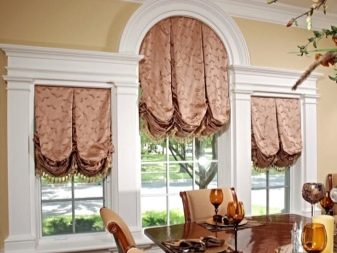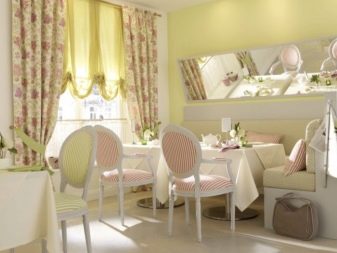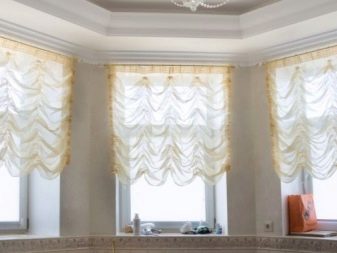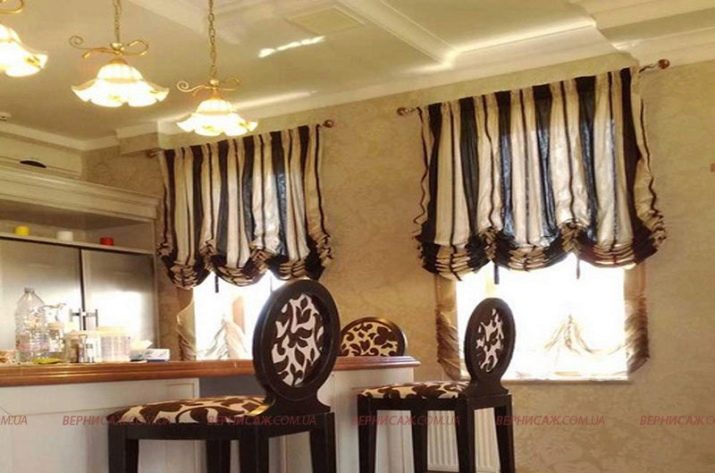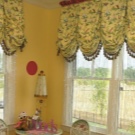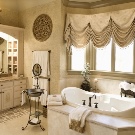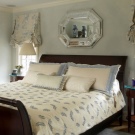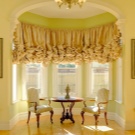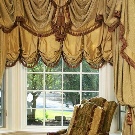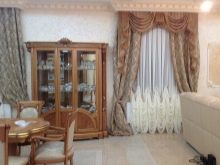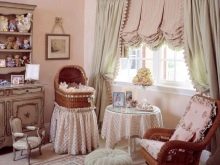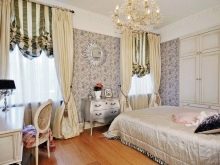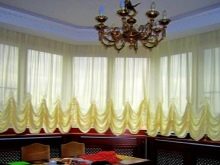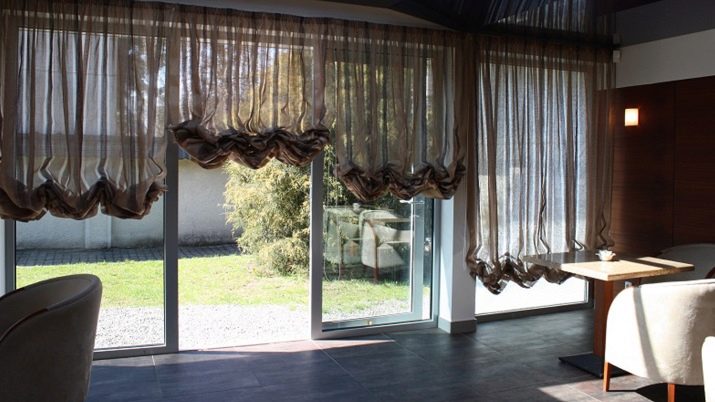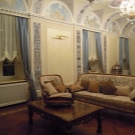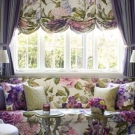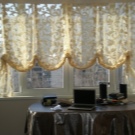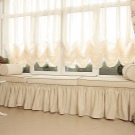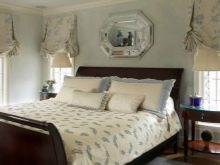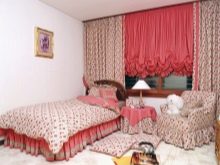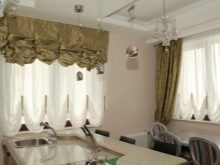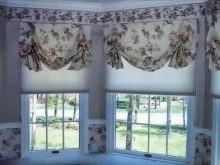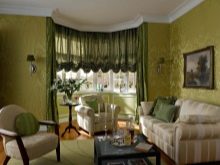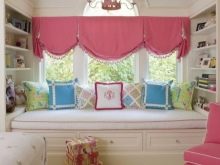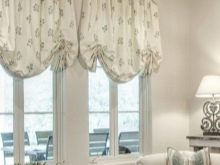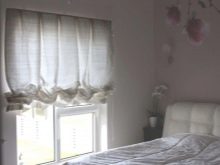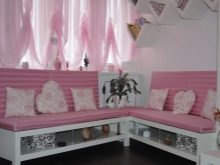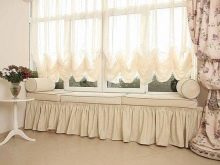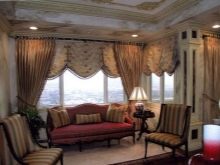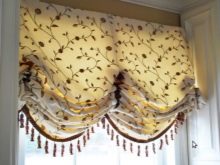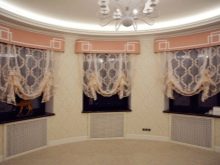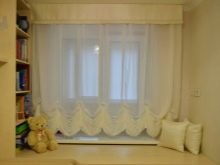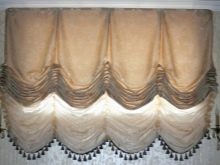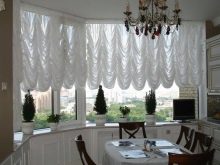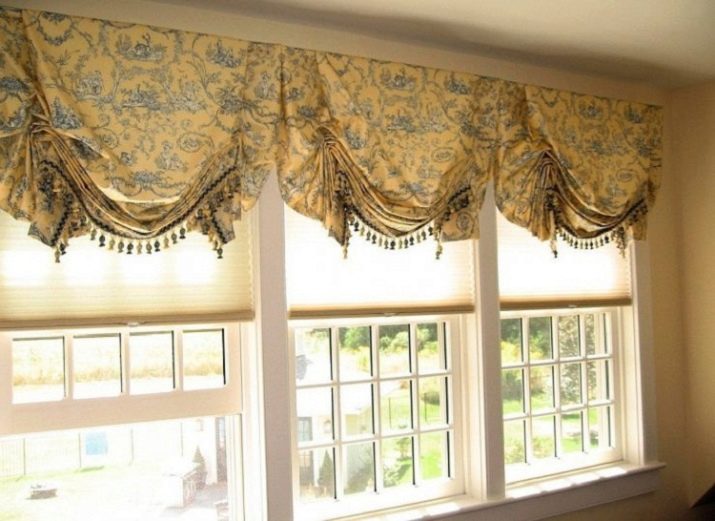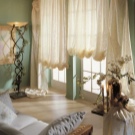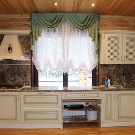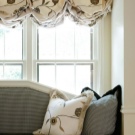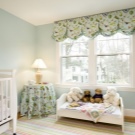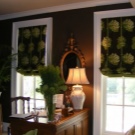Austrian curtains in the interior
The modern approach to the design of window openings with curtains is replete with a variety of models for every taste and budget. Among other options, Austrian curtains are especially popular with many buyers. What they are, where relevant and what are the nuances of their entry into the interior, find out together later.
Design features
Austrian curtains are curtains, originating from the XVIII century, when they were invented to decorate the windows, closed by shutters. These are lifting cloths of fabrics, characterized by the mechanism of lifting cords, as well as a low consumption of textiles.
In fact, they combine two types of curtains: Roman and French. From the French, they borrowed the pomp and bulk of the folds, and from the Roman - a simple and convenient lifting mechanism.
When the curtains are in a straightened state, they are no different from ordinary rectangular panels. In this case, as a rule, one curtain is more often used on one wall. When they are lifted, a rectangular panel turns into a frill of scallops. For installation of such curtains use rail eaves.
The shape of festoons is formed by the ropes, which are passed through special loops inside the fabric. These cords are also attached to the eaves. The panel is controlled by a chain. She is pulled when you need to open the windows. Cords are the main working element of curtains, since it is their tension that determines the size of the festoons and the degree of their collection.
Style and material
Austrian curtains themselves cannot be called universal. Due to its shape, they are to the classic areas of interior design, which is characterized by the presence of elements of the palace solemnity. No wonder it was such curtains that have long decorated palaces and residences of the nobility. Today they are used in such areas as classic, neoclassical, classicism. They can decorate some ethnic interiors (for example, Italian and English styles).
However, they often fit into modern trends with difficulty, since not every modern trend needs a deliberate demonstration of the luxury and status of the host.
Of course, they will be a ridiculous stain in the design of a loft or grunge, avant-garde or minimalism.
But they can be beaten in the Arab style, Venetian and Greek. This should take into account the relevance of the lining, as well as the possibility of combining with tulle or lambrequin.
To fit them into the interior of specific rooms, it is necessary to beat the design at the expense of the material of manufacture. For example, a light veil or other translucent material makes the initially massive design softer. For this reason, in most cases, such products are made from lightweight and practically weightless materials, which, in addition to the veil, include artificial silk and organza. Products made of silk, have deep and crisp folds in contrast to the veil fold. Analogs from calico have a greater width of the folds.
Where relevant?
It should be clearly understood that these curtains, regardless of the material of manufacture, give pomp and always attract attention.Making their windows is important to consider: they will not look equally well in different purpose rooms. The opinion that they are harmonious in offices is erroneous. The office is not a place for such a decor, and even the office of a male leader (such curtains are given by the female beginning).
If we talk about the rooms of the apartment or a country house, these curtains are quite suitable for decorating the living room. However, so that they do not weigh down the interior composition, they should not be repeated in the design of the doorway leading to the hall.
We must not forget about the possibility of the material visually making discomfort in the perception of space. The abundance of satin or denser fabric, even with a pattern, can ruin the design of the key room of the dwelling.
Appropriate Austrian curtains on the windows of spacious rooms with high ceilings. With a lack of footage, they will look cumbersome and ugly. If you really want to hang the Austrian curtains on the walls, in this case you should take a model made of thin fabric, which when assembled will give smaller and neat festoons. It is also important to pay attention to the fact that the curtains have no other massive decor.
If desired, you can combine these curtains with a veil in the bedroom. However, in this room we must not forget that both the curtains themselves and their additions were made of thin fabrics. Otherwise, the bedroom may occasionally resemble a theater building with its inherent massive curtains. If you thoroughly approach the design, you can decorate with Austrian curtains and kitchen windows. However, in this case, they will not always have additional panels on the sides, which depends on the particular layout of a particular room.
If we talk about unusual, but possible use cases, it should be noted bay window. This is where the curtains of fine fabric, collected in the festoons, will look beautiful. But again, if at the same time and the bay window, and the room itself is spacious. When the place is sorely lacking, it is better to replace this decor with roller blinds or panels on the grommets.
Such models look great on different projections of the layout. For example, if you try, they can fit into the protruding space of a room with a window and a podium, a sofa occupied and built-in niches for various books that contribute to rest.
So that at the same time the design of the curtains does not look massive, it is worth limiting the number of scallops, use lightweight fabric and not collect it too tight.
Colors and patterns
The colors of the Austrian curtains are varied. Most of the time they are performed in pale colors of the palette, since this is how they look elegant, and do not shout about themselves. This allows you to make color spots of the interior evenly spaced throughout the area of the room. When the curtains are bright, you have to beat their color with accessories, in the tone of furniture upholstery, or even as wallpaper.
As for the most demanded tones, today they are shades of pastel (beige, cream, cream, peach, dairy, lilac, blue and others). Popular and light green, as well as pistachio color. Of course, the curtains can be pink, but only in the girl's room. In general, they try to select the tones of the products in such a way that all households like them.
In the center of attention and white curtains, although they can not be called practical. For kitchens, you can use textiles with prints on a light background. For example, plain flower motifs of gray and terracotta on a white background, green pattern, contrasts of gray and light brown on a creamy basis look good.The main rule of colorful Austrian-type curtains is the non-brightness of the tones of the pattern, as well as their small size.
However, according to experts, it is better to give preference to single-colored models due to the already complex shape of curtains. For example, such products are harmonious in the design of bedrooms, living rooms, office and home library.
If you want to decorate the room with a design with a pattern, you can use materials with a combination of only two, not sharply contrasting tones of the color palette.
Tricks of choice
When ordering or buying ready-made curtains should take into account such a nuance as fastening with velcro. This is due to the design features of curtains. Of the two types, it is the rod that is more secure, which will not suffer from the occasional sharp tension or the weight of the fabric, even if it is heavy. In addition, it is important to consider and design the upper edge of the Austrian curtains.
For example, today a rigid lambrequin made of textiles, fastened on both sides of the window, is quite in demand. It looks more aesthetic than wide frills, besides it gives completeness to extraordinary curtains.To make the product look whole, the fabric of the cloth and the lambrequin must be identical. This design option is appropriate in cases where the cornice is not hidden by the design of the ceiling structure.
When choosing it is important to pay attention to textiles, its practicality in washing and durability. Knitted fabrics are not suitable for sewing these curtains, because they will sag, and in the free state they can be deformed.
If it is planned to hang the curtains on separate and narrow windows in a particular room, you can reduce the number of scallops to a minimum, than to combine all the windows of one wall with a single panel with scallops.
This technique can also be used in the design of the oriel of a faceted form. For example, you can do with one scallop for each window, hanging on it a separate canvas. Externally, this design will not be massive: on the contrary, it will look not only light, but also stylish. In this case, it is good to buy or sew independently Austrian curtains from natural fabrics. When the bay window has a rounded shape, it is easier to hang a single panel on its windows, forming from it an aesthetic figure curtains.
It is worth paying attention to the size of the pattern: even if you really like the fabric, it is important to understand that more often the curtains will be in the assembled state. And this means that the appearance of the print will be deformed. If for one picture it is not so noticeable, for the other it can change the perception of curtains when folded. Of course, you can hide some part of the cloth with a straight lambrequin, but some may look ugly.
Finally it is worth noting: Austrian curtains are easy to manufacture. If a woman has minimal sewing skills, she is able to make such a design in a fairly short time. At the same time, it will look no worse than a custom or purchased product. The main thing in this case - initially choose the right material, given its ability to drape.
How to sew the Austrian curtain, see the following video.
